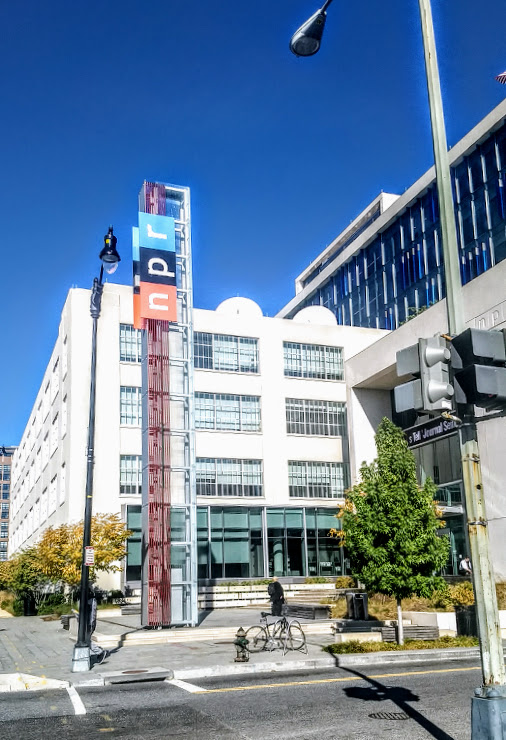 May thanks to SWLing Post reader, Aaron, who writes:
May thanks to SWLing Post reader, Aaron, who writes:
Hello Thomas,
We are moving to Panama full-time come January and I am a news junkie. The rural area we are moving to only has satellite internet which is very expensive and in not unlimited. Therefore I desperately need to figure out if I can short-wave Armed Forces or NPR directly in Panama?
Any help?
Thanks, Aaron
Wow–good question, Aaron.
Before I begin looking at options, keep in mind that the SpaceX Starlink system is being rolled out to beta testers now and will likely be public next year. There’s an initial investment involved with equipment, but the monthly pricing is much more attractive than traditional sat internet providers and latency is also much lower. I, for one, will be looking into Starlink due to the terrible Internet options I have from home.
But back to your question…
So I’m not entirely sure the AFN still broadcasts regularly (or at all) from Guam and Diego Garcia on shortwave these days. I haven’t checked on this in a long time. I hope readers can confirm for us. Over the past couple of decades, AFN shortwave has trimmed and closed many of their sites/broadcasts.
If they covered Central America (they don’t) one option would be satellite radio. Sirius XM has an NPR highlights channel called NPR Now.
One thought I had though was FTA (Free To Air) satellite. This would require investing in a small satellite receiver and dish, but sometimes news audio feeds can be found for free via satellite. I wouldn’t be surprised if NPR has an accessible feed. Plus, you’d then also have access to other live satellite programming and channels from across the globe. My hope is that our FTA-savvy Post readers might comment and help us out here! Click here to read a post by Mario about using FTA to listen to radio stations.
Readers: Please feel free to comment if you have other ideas for listening to NPR from Panama (or other rural/remote parts of the world).

Delayed response here, but FTA on 91 West Ku is filled NPR stations! I believe a C-Band will get even more.
The major issue will be the footprint, since it doesn’t seem to hit the bottom of the Central America is might be an issue. That said, a C-Band of 1.2 Meters MIGHT be able to pull in the TV stations on 99West from the Caribbean there — when I last checked they were carrying an NPR station in their second audio. I’m not 100% sure, but you can check on a site like satelliteguys.us to find out for sure.
I posted a detailed rely earlier that seem to not have been posted here, (prob becasue I put links in it!)
Short story is that NPR is available unencrypted as an MPG stream from geostationary satellites the cover the Americas.
Get a Free to air (FTA) sat box and a small dish, search the web for satellite positions and you will be able to listen without any boundaries. 🙂
Hi, Neil,
Yes–the site auto moderates any post with more than one link. That’s why it didn’t show up immediately. It’s there now!
Cheers,
Thomas
Thanks Thomas 🙂 Very wise too BTW!
I think your only option would be to grab a cheap “Free to air” satellite receiver and a small dish and see what you can hear on the radio channels. ( like this https://www.amazon.com/Viewsat-VS2000-Ultra-Satellite-Receiver/dp/B000QXBA3C/ref=sr_1_4 ) NPR is up there over the Americas unencrypted .
as shown here https://www.lyngsat.com/radiochannels/us/NPR-Now.html
You will get the added bonus of lots of TV in weird languages too 🙂
If you have not played with “Free To Air” satellite stuff before, you may need to do some research, also I would recommend seeing which birds are usable from your Panamanian location.
“NPR Now” is a specialty station that NPR programs for SiriusXM satellite radio.
It does not broadcast the two most popular NPR programs: “Morning Edition” and “All Things Considered.”
https://www.siriusxm.com/nprnow
Fixed wireless broadband is rolling out in lots of places in Central America. You would be surprised about the expanded coverage.
Seriously. instead of listening to NPR why don’t you re-focus your energies on Spanish-language radio: (1) Your time in Panama will be more pleasant as your understanding of language, traditions, culture, etc. will vastly improve (2) US media , whether conservative or liberal, is very myopic and inwardly focused. (3) Latin America has a strong tradition of journalism in print and electronic media. Central American radio/TV can be a wild, fun ride. This gringo says “Go native!”.
I haven’t been able to get even a carrier on the AFN services for a long while. Hawaii was shut down a long time ago and I don’t think Diego Garcia has been up for at least 3 years.
what about this ?
https://www.inmarsat.com/service-group/broadband/
not sure about costs, but may be worth fathoming and, for sure, Panama is covered 😉
If you stream NPR at 128 kbps you will use approximately 60 Mb per hour of bandwidth. If you listen
for 4 hours per day that’s roughly 7.2 GB per month.
Most satellite service providers don’t slow down your Internet speed until you’ve used at least 40 GB of data in a month.
By streaming NPR for 4 hours per day you would be using less than 1/5 of your monthly bandwidth quota.
Very good point!
NPR is largely talk. I would go a step further by looking for a low bitrate steam in AAC+, Opus, or similar compression formats.
AAC+ (-HE) can provide about FM quality stereo audio at 24-32Kbps. Opus can deliver decent speech quality at 16Kbps and even much lower depending upon content complexity and desired frequency response.
On a side note, speech format Codec 2 can go as low as 450bps (experimentally), though AFAIK, it has yet to find adoption in streaming media roles.